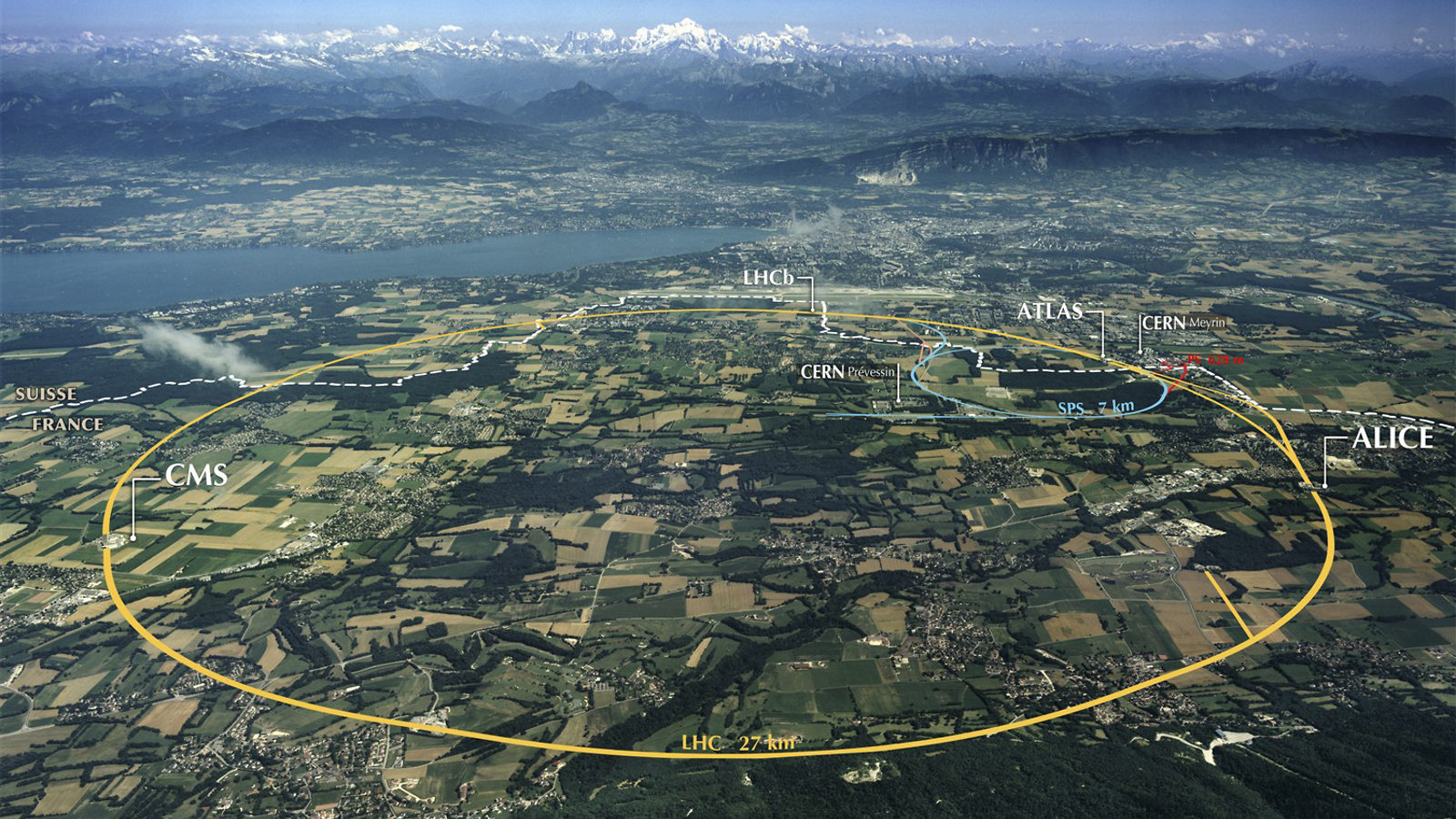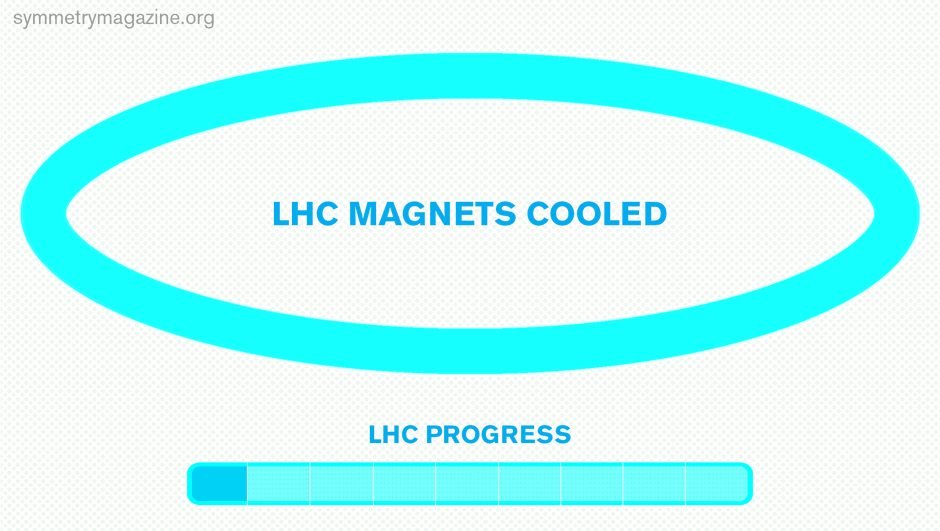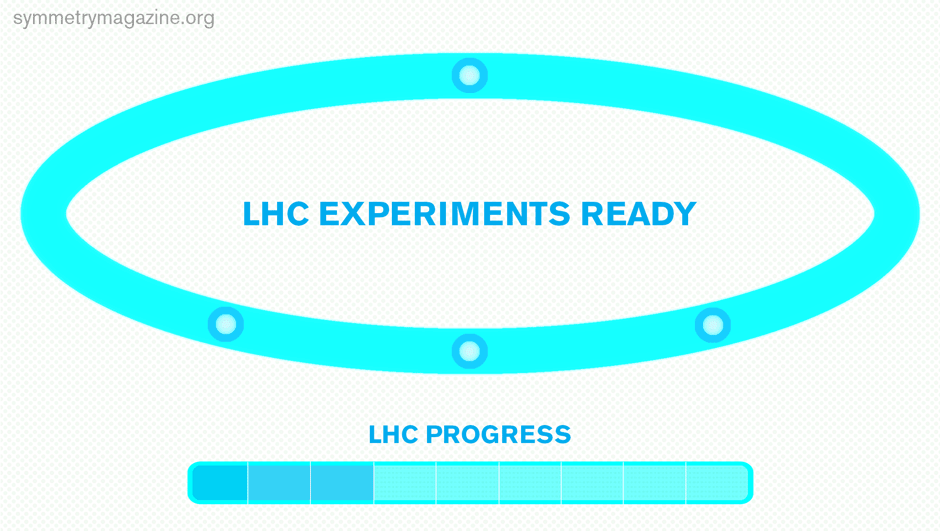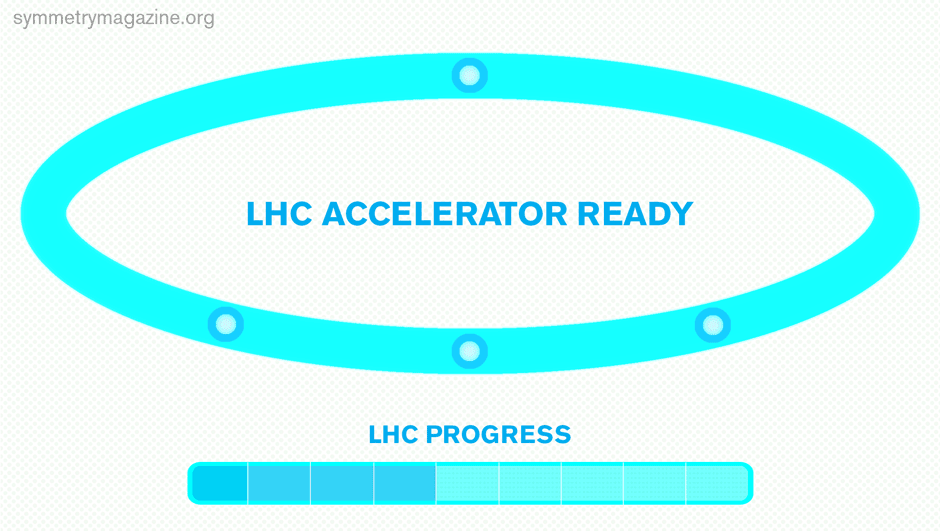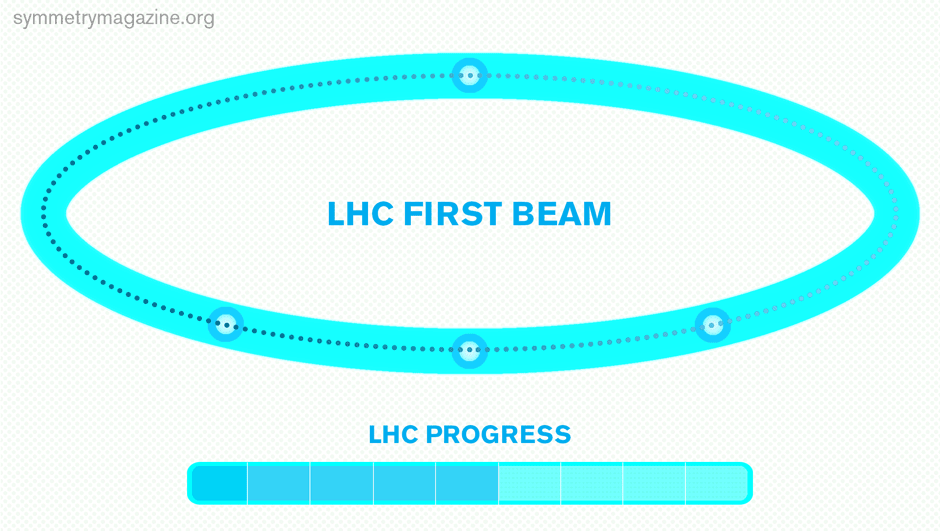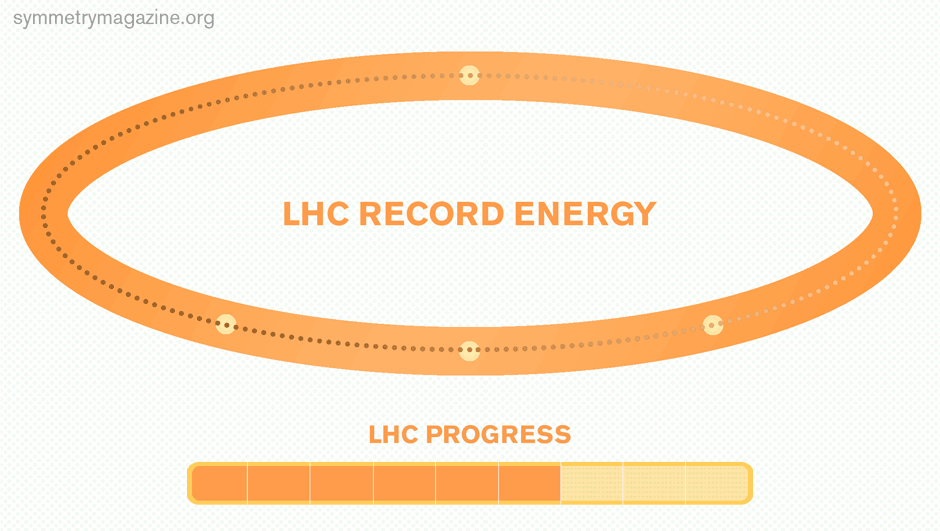All systems are go! The the Large Hadron Collider’s operations team has started running the accelerator through its normal operational cycle sans particles as a final dress rehearsal before the restart later this month.
“This is where we bring it all together,” says Mike Lamont, the head of CERN’s operations team.
Over the last two years, 400 engineers and technicians worked a total of 1 million hours repairing, upgrading and installing new technology into the LHC. And now, the world’s most powerful particle accelerator is almost ready to start doing its thing.
“During this final checkout, we will be testing all of the LHC’s subsystems to make sure the entire machine is ready,” says Markus Albert, one of the LHC operators responsible for this dry run. “We don’t want any surprises once we start operation with beam.”
Engineers will simulate the complete cycle of injecting, steering, accelerating, squeezing, colliding and finally dumping protons. Then engineers will power down the magnets and start the process all over again.
“Everything will behave exactly as if there is beam,” Albert says. “This way we can validate that these systems will all run together.”
Operators practiced sending beams of protons part of the way around the ring earlier this month.
During this test, engineers will keep a particularly close eye on the LHC’s superconducting magnet circuits, which received major work and upgrades during the shutdown.
“The whole magnet system was taken apart and put back together again, and with upgraded magnet protection systems everything needs to be very carefully checked out,” Lamont says. “In fact, this has been going on for the last six months in the powering tests.”
They will also scrutinize the beam interlock system—the system that triggers the beam dump, which diverts the beam out of the LHC and into a large block of graphite if anything goes wrong.
“There are thousands of inputs that feed into the beam interlock system, and if any of these inputs say something is wrong or they are not happy about the behavior of the beam, the system dumps the beam within three turns of the LHC,” Lamont says.
During the week of March 23, engineers plan to send a proton beam all the way around the LHC for the first time in over two years. By the end of May, they hope to start high-energy proton-proton collisions.
“Standard operation is providing physics data to the four experiments,” Albert says. “The rest is just preparatory work.”



